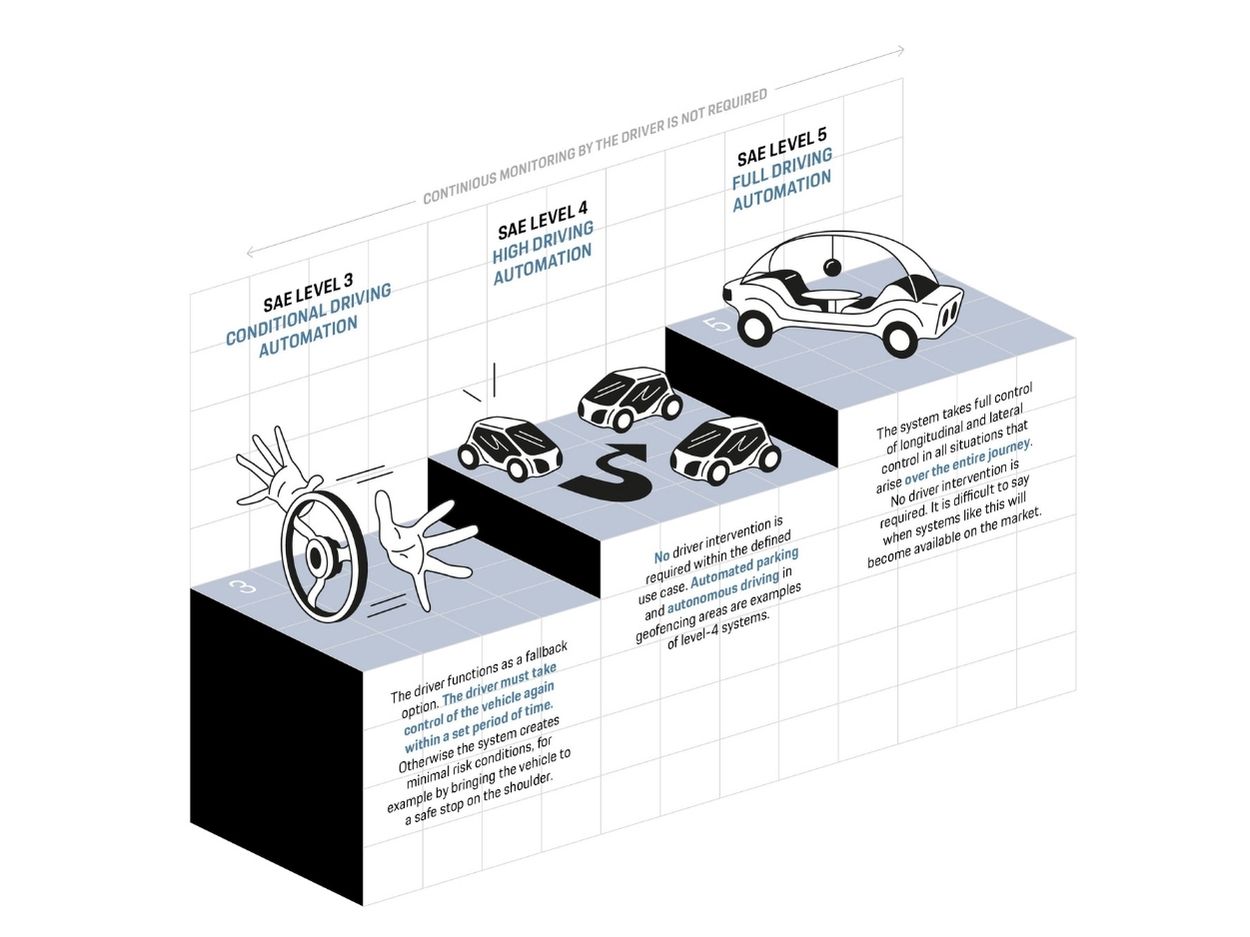
The Future of Mobility: Focus on SAE Levels
Hold the Driver, Please
The ongoing evolution of driver assistance systems is continuing apace and will soon open up new markets for autonomous transport solutions. We explain what all this has to do with the SAE levels of driving automation.
Driver Assistance Systems make traveling easier and development has progressed rapidly in recent years. Cruise control and lane keeping assistance systems are among the best-known examples. Over the next few years, new systems such as one for automatic parking in parking garages are likely to be added.
The technology organization SAE has defined various levels (‘SAE levels’) to classify driver assistance systems according to their capabilities. SAE level 0 describes a car in which the driver is responsible for all aspects of driving and, at most, is supported by warnings that alert the driver. Intervention in longitudinal or lateral control by the technology starts at SAE level1. Systems at SAE level 2 can intervene in both longitudinal and lateral control.

The progression from SAE level 2 to SAE level 3 marks an important turning point: While drivers at levels 0, 1 and 2 have to monitor the systems at all times, this is no longer necessary at levels 3, 4 and 5. As the levels progress, the systems are increasingly capable of taking the vehicle to its destination without human intervention.
In the context of driver assistance systems, a distinction is also made between ‘automated’ and ‘autonomous’. When automated driving functions are used, the driver activates the system according to preference, and does not have to monitor it continuously. The driver is assisted and, in certain cases, prompted to take over all driving tasks within a limited time. This corresponds to SAE level 3. When autonomous, driverless driving systems are used, there is no need for a driver to monitor the system. Driving on a variety of routes is possible without driver intervention. This corresponds to SAE levels 4 and 5.

Systems at SAE level 4 are currently under development. They will not only simplify driving even further, but also open up new markets: At SAE level 4 and higher, innovative driverless services such as Mobility as a Service (MaaS) and Transport as a Service (TaaS) become possible. Autonomous vehicles will then be able to transport people and goods to their destinations. Robots or drones could complete the final-mile delivery of parcels, for example, to the front door or window.
This will require new apps and backend solutions in the cloud, however, as functions such as ordering or paying for services have to be processed by software, and fleets of intelligent and networked level-4 vehicles also have to be coordinated and directed to their customers. Porsche Engineering is working intensively on these issues and intends to offer its customers the development and validation of such systems in the future.
Info
Text first published in the Porsche Engineering Magazine, issue 2/2022.
Text: Christian Buck
Illustration: Benedikt Rugar
Copyright: All images, videos, and audio files published in this article are subject to copyright. Reproduction in whole or in part is not permitted without the written consent of Porsche Engineering. Please contact us for further information.
Contact
You have questions or want to learn more? Get in touch with us: info@porsche-engineering.de

